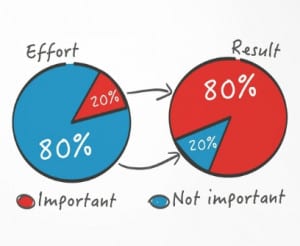The decision-making technique is used in all areas of project management, e.g. approval of a business case, evaluation of proposed solutions, choice of vendor or services for project work, risk mitigation, and approval of the change request. Decisions that are taken have a wide-ranging effect on the project and can lead to a difference between success and failure.
There is no single decision-making method that can be applied to all decisions taken on a project, but a variety of techniques can be used. The selection of the right technique is as important as the decision-making result. Trying to access a lot of different techniques would allow a project manager to choose the right one for the decision being made.
What is Decision Making in Project Management?
What are decision models in project management? Project management has evolved as a high-level decision-making methodology with the aid of analog and digital tools to enhance the intuition of a Project Manager and his team to make decisions in favor of the project’s future.
Such decision-making techniques are general, based on common sense, and used by decision-making authorities in all trades to back up the decisions made.
Time, cost, and scope reflect the triple constraints of any project. Any difference in the stipulated value of these three constraints would likely affect the outcome of the project. So, what would a project manager do to keep those three limitations in check? Should he do any research around after the risks have arisen or does he prepare for the risks through these models of decision-making?
We do not essentially plan risks into decision-making models, but we do carry out a reality check on what would be the action taken in response to a specific situation. This situation can eventually lead to positive or negative risks and we can deduct a risk response plan accordingly.
The Functionality of Decision Making
There are definitely different types of decision-making methods that can support the manager, particularly if he is aware that they fall into a certain category.
1.Functional
Functional decision-making implies a leader ‘s ability to be flexible, authoritative, or democratic. Being flexible is able to come up with a variety of suggestions or solutions provided by team leaders, internal sources or external sources, while the authoritative approach style means that the project leader makes all decisions, and those decisions are the word for the rest of the community. Democratic types allow everyone to have a say, whether their idea is right or wrong.
2.Non-Functional
Non-functional decision-making may have the flexibility to do so, but these are also the types where spontaneity is out of reach or where decisions are not actually made. Think of this as a ‘wishy-washy’ technique, as the project leader leaves it up to chance, getting whatever kind of attitude is going to be. This type of method is not the ideal situation, as projects may fail because of these attitudes. For example, if the project manager does not pass certain details to the team or if they do not have team research to investigate certain details, the project may not proceed as planned.
The Decision Making Process
The main objective of the decision-making process is to make a rational decision. Rational decision-making means a tendency that is appropriate to the already existing objectives under the given conditions and constraints.
All project managers have to make decisions, but typically good decisions come by using a logical and rational process. The project manager increases the chances of coming to the right decision if used correctly. The measures toward a good process of decision making are:
- Identify The Problem: The first and most important step in the decision-making process is to recognize the issue. Only when there is a clear understanding of the problem or the decision to be made will the project manager continue to try a solution. If the issue is wrongly stated or is not clear, the decisions would be wrong.
- Identify Alternatives: The project manager and the project team will start listing all potential alternatives. Most of the time, there will be a variety of alternatives and it is worth taking enough time to ensure that there are a variety of viable alternatives.
- Evaluate Alternatives: This is the step in which the analysis of the alternatives begins. The project manager can use techniques to identify alternatives. Decision Matrices and SWOT analysis are two of these techniques. The goal is to provide a list of the best alternatives, using a number of criteria for viability.
- Make A Decision: After the alternatives have been evaluated. The project manager will pick two or three of the top-notch alternatives. All low-grade alternatives should be removed. The project manager would then have to review the problem statement and test the solutions against the chosen alternatives and agree on a solution that has the best chance of solving the problem.
- Implement the Decision: Before the chosen solution is implemented, the project manager may need to revise the project plan, schedule, budget, and other tools to ensure that the solution can be implemented. The follow-up is part of the implementation process. The follow-up ensures that the problem has been resolved by implementing solutions.
When a decision or solution has been made, the project manager will track and determine whether the decision has resulted in the expected results or benefits.
Decision Making Models in Project Management
1.SWOT Analysis
This is a very common decision-making model that is specifically used during the project’s feasibility study. When a project is evaluated based on its Strength, Weakness, Opportunity, and Threat, a SWOT analysis is performed to resolve unsorted issues.
The steps for SWOT analysis are the same as described above, but there is one caution that must be followed: the emphasis on deep analysis of strengths and weaknesses, as well as opportunities and threats.
2.Maslow’s Pyramid
This decision model speaks volumes about basic human needs and their effect on human behaviour. While working on the projects the most inconsistent variable which a project manager faces is a human resource. Understanding Maslow’s pyramid helps project manager to identify problems related to human resources.
According to Maslow, there are five levels of human needs that must be met one by one before a person can be considered self-actualized.
Physiological needs, security requirements, social relationships, recognition, and self-actualization are all part of the pyramid.
This theory, when properly understood, can greatly assist a project manager when working with human resources.
3.Pareto Principle
This is also known as the 80-20 rule, in which you prioritize your problems and then seek solutions. To better understand the concept, consider this 80-20 rule as an example of a problem in an organization caused by people. We can say that 20% of the people in any organization are responsible for 80% of the problems.
Assume you have a BPO, and five of your company’s problems are caused by a lack of promptness, three by poor linguistic ability, and two by poor organizational skills. So, you could say that the main issue here is a lack of training and development, because if you train your employees, promptness and linguistics will be taken care of automatically.
4.Monte Carlo Simulation
Now here’s a cache: Monte Carlo simulation is a model that focuses on numerous simulations over random sampling, yielding approximate results. It simply tells us that even models can be random and have very little reality attached to them.
This Monte Carlo simulation model is intriguing because of the random sampling and use of probability and statistics to determine the outcome. In project management, the Monte Carlo simulation method is used for quantitative risk analysis, which allows you to identify the quantitative impact of a risk on the project’s objective.
5.Decision Tree Analysis
When performing procurement analysis, this decision model is used. This decision tree analysis answers the question of whether to build or buy. You can assign each possibility a percentage chance of yes or no and compare the amount invested to the amount received. You can decide whether to build or buy for a specific project based on the profits.
There are also other decision-making models that can be used in both technical and personal life. These tools are sometimes regarded highly in the field of project management due to their enormous capacity for supporting project manager decisions. A good project manager understands the importance of these effective tools that can be used throughout the project management life cycle.












